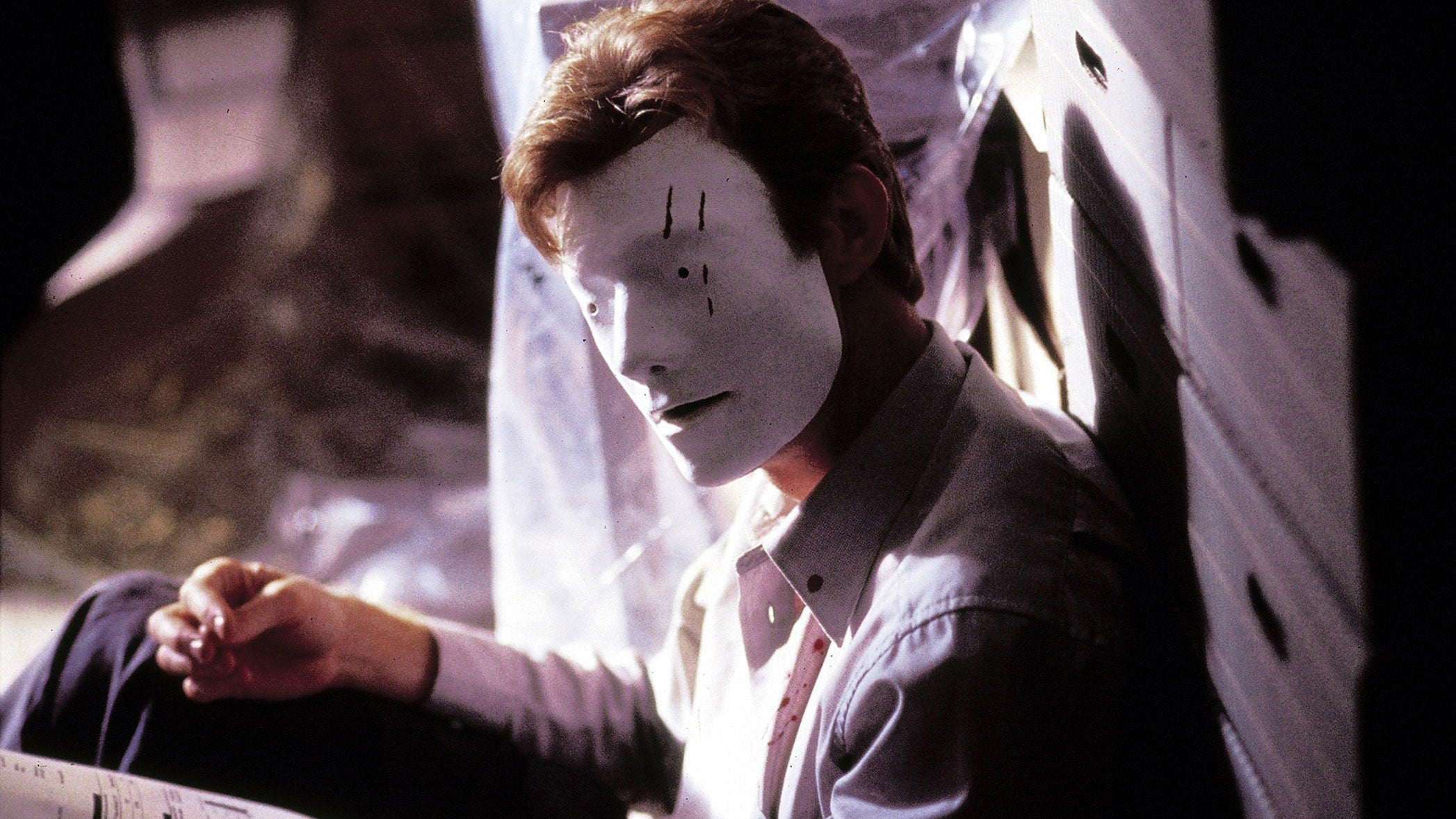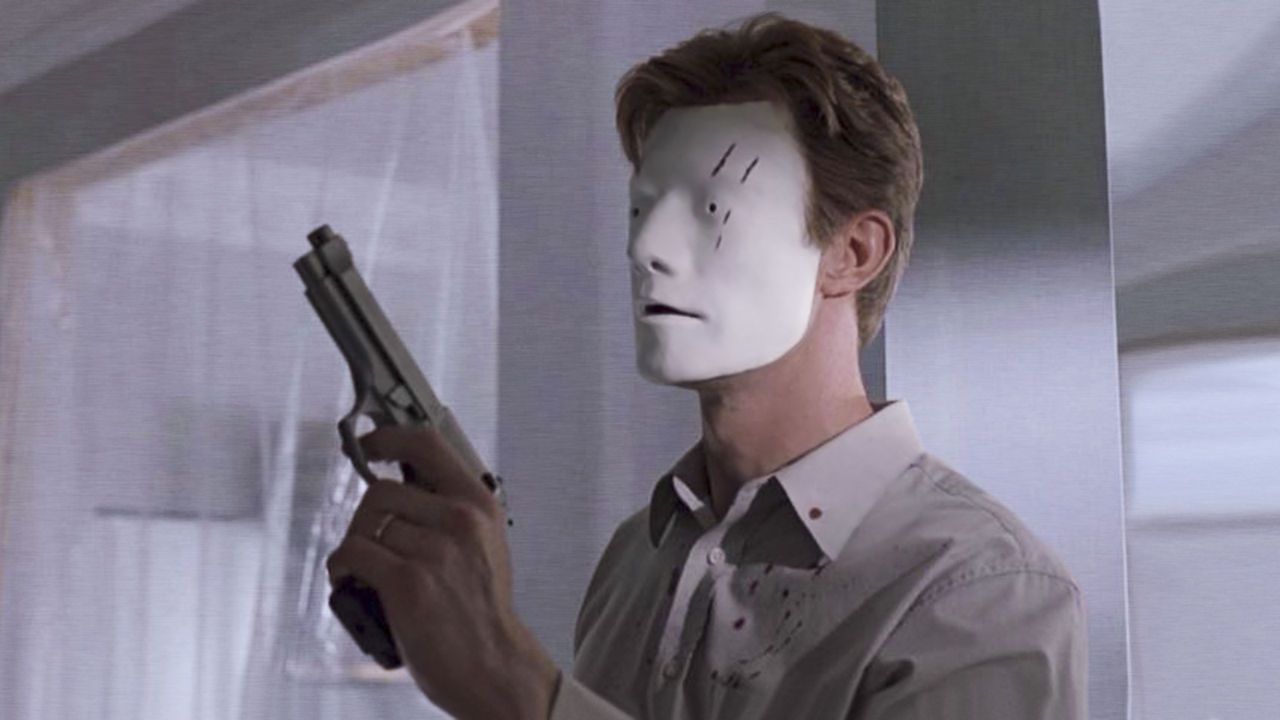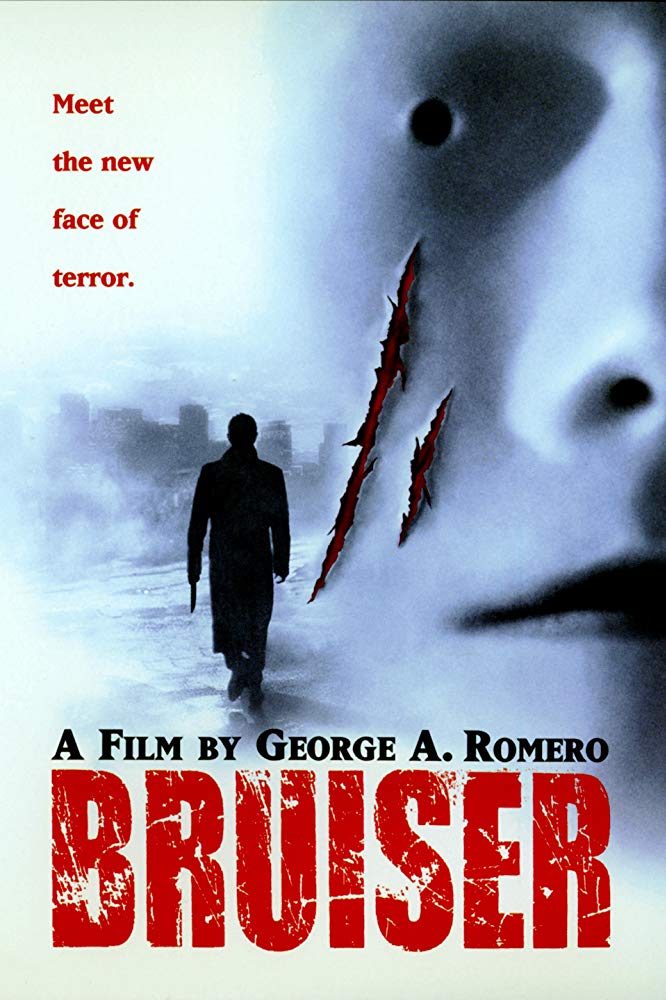Crew
Director/Screenplay – George A. Romero, Producers – Ben Barenholtz & Peter Grunwald, Photography – Adam Swica, Music – Donald Rubinstein, Visual Effects – Gajdecki Visual Effects (Supervisor – John Campfens), Special Effects – Malivoire Pictures, Makeup Effects – Caligari Inc, Production Design – Sandra Kybartas. Production Company – Barenholtz Productions/Romero-Grunwald Productions/Le Studio Canal +.
Cast
Jason Flemyng (Henry Creedlow), Peter Stormare (Milos Styles), Leslie Hope (Rosie Newley), Nina Garbiras (Janine Creedlow), Andrew Tarbet (James ‘Jimbo’ Larson), Tom Atkins (Detective McCleary), Jeff Monahan (Tom Burthram), Jonathan Higgins (Detective Rukowski), Beatriz Picano (Katie Saldano)
Plot
Henry Creedlow is an executive with ‘Bruiser’ fashion magazine. He is walked over by everybody in his life, including his obnoxious boss Milos Styles and his wife Janine who informs him that she has been sleeping with other men. Henry wakes one morning to suddenly find that his face is now a blank white mask that cannot be removed. He struggles to hide it from people. The mask also becomes the impetus for him to be able to unleash the anger he never could before. He begins killing those who have been taking advantage of him – everybody from the thieving maid to his wife and the best friend who has been stealing from him.
George A. Romero was once seen as one of the most promising directors working in the horror genre. Romero premiered with the all-time classic Night of the Living Dead (1968), a low-budget apocalyptic zombie film, from which influences can still be felt over three decades later. Romero remained a fiercely independent director and went onto make other standout films such as the suburban witchcraft film Jack’s Wife/Season of the Witch/Hungry Wives (1972); the underrated madness-inducing biospill outbreak film The Crazies (1973); the brilliant vampire deconstruction Martin (1976); the highly successful splatter-heavy follow-up to Night of the Living Dead, Dawn of the Dead (1978) and its muchly underrated sequel Day of the Dead (1985); and the Stephen King-scripted horror comic-book homage Creepshow (1982). All of these are just classics.
Alas into the 1990s, George Romero’s output became more sporadic and the question was increasingly apparent – had George Romero lost his mojo? Romero had his name attached to a number of projects, more of which fell by the wayside than not. In actuality, Romero has only made three-and-a-half films since the mid-1980s – Monkey Shines (1988), one of the segments of Two Evil Eyes (1990), The Dark Half (1993) and Bruiser, none of which succeeded in setting the world alight and none of which are fired up with the brilliance of Romero’s earlier films. Romero did finally return to form again after this with Land of the Dead (2005), Diary of the Dead (2007) and Survival of the Dead (2009).

Likewise, Bruiser failed to attract much notice and barely even received a theatrical screening outside of fantastic film festivals. George Romero has a way with brilliant and biting sociological metaphors in many of his films – the level of ideas and interplay he engages in can often be stunning. On the other hand, there is sometimes a nastily unpleasant undertow to some of his films. He likes to write just desserts morality plays, not unakin to old EC horror comics tales where the greedy and self-absorbed in life usually ended up abruptly meeting some supernatural comeuppance. Romero and Stephen King conducted an EC homage in their anthology Creepshow, which did the EC just desserts morality play with rich lashings of black humour.
Outside of his collaboration with King, Romero has written a number of other such just desserts stories – Monkey Shines, his segment of Two Evil Eyes, the screenplay for Creepshow II (1987) – that do the EC-styled story, but without the sense of black humour that made the originals palatable. However, without the undertow of black humour, all that that leaves is a series of horror tales where George Romero is sketching one-dimensional caricatures of venal people and setting them up to be nastily despatched. The one-dimensional unlikability of the characters gives these exercises a certain shrill unpleasantness, one where Romero seems to be inviting the audience to cheer on their despatches.
Bruiser is filled with these caricatures – the bitchy wife, the obnoxious asshole boss, the best friend account who is revealed to be scamming the hero and the racist caricature of a thieving Latino maid. All are set up as deserving victims. In this regard, Bruiser is fairly much a re-run of Monkey Shines – which felt like a single-minded vent of monomaniacal anger against the people who had betrayed the hero. One is almost starting to feel like there is paranoiac and embittered that runs through Romero’s personality – of finding out that all the people the closest to him have deeply betrayed him or are unworthy of trust – that he seems driven to return to and work out again and again.

On the positive side, Bruiser is a slightly better film than Monkey Shines. The one-dimensional characterisations are at least offset by a decent cast. Peter Stormare gives a live wire performance that succeeds in capturing the attention, although the entertaining obnoxiousness of it eventually starts to become over-the-top by about the time that Stormare is busted by the cops. The part of Nina Garibaris’s wife is particularly well written and she provides some sizzle in the scenes where she has sex with Peter Stormare in full view at a party and then blisteringly runs husband Jason Flemyng down and walks out on him. It is also nice to see that Romero has chosen British actor Jason Flemyng in the lead over any American counterparts, where Flemyng convinces ably.
The central metaphor of facelessness that runs throughout the story is effectively conveyed. The idea of a man who loses his identity because he is too unassertive is similar to H.F. Saint’s Memoirs of an Invisible Man (1987), which later became the basis of the John Carpenter film Memoirs of an Invisible Man (1992). You could also draw comparisons to the Japanese classic The Face of Another (1966). Romero delivers some striking images of Jason Flemyng painting his blank faced mask with streaks of paint and blood. Although, the metaphor is not explained particularly well – such as the connection between the blank facemask and how this somehow gives the affected person the ability to suddenly exact repressed revenge fantasies – and Bruiser ends on an ambiguous resolution where the whole thing appears to be starting all over again with another corporate underdog. Nor is the title relevant to the story.
Trailer here


